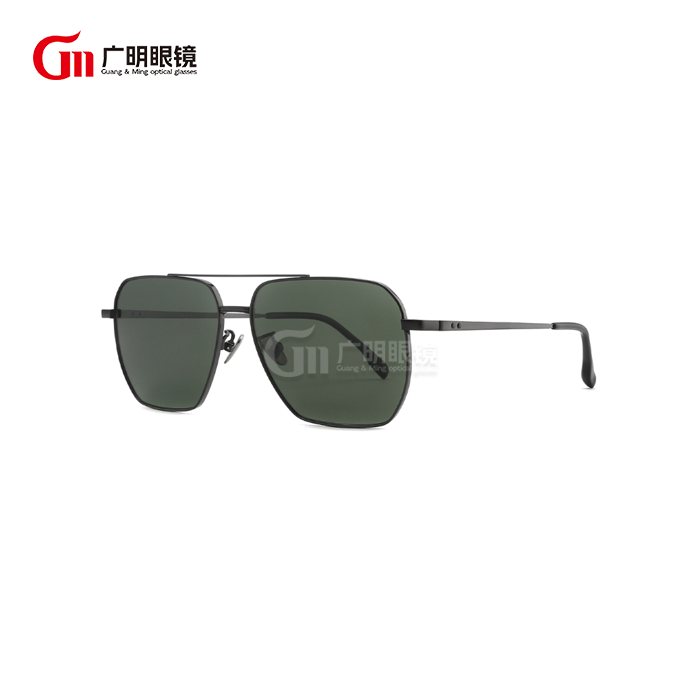Do Mirrored Hexagon Shades Offer UV400?
Understanding UV protection standards becomes critical when selecting premium eyewear designed to safeguard your vision from harmful solar radiation. Hexagonal mirrored sunglasses with UV400 protection represent the gold standard in optical safety, blocking 99-100% of ultraviolet rays up to 400 nanometers wavelength. Many consumers wonder whether the mirror coating technology used in specialized eyewear affects the fundamental UV blocking capabilities that define quality sun protection. The relationship between reflective coatings and ultraviolet filtration involves complex optical engineering that combines multiple protective layers to achieve comprehensive eye safety. This technical integration ensures that style and functionality work together to provide both aesthetic appeal and medical-grade protection against the damaging effects of prolonged UV exposure.
What UV Protection Do Hexagonal Mirrored Sunglasses Provide?
UV400 Standard Compliance
Quality hexagonal mirrored sunglasses incorporate UV400 protection as a fundamental design requirement, ensuring comprehensive blocking of harmful ultraviolet radiation across the entire spectrum. The UV400 standard specifically addresses protection against UVA rays (315-400nm), UVB rays (280-315nm), and UVC rays (100-280nm), providing complete coverage against all forms of solar UV radiation. Professional-grade hexagonal mirrored sunglasses undergo rigorous testing to verify their UV400 compliance through specialized spectrophotometry equipment that measures transmission rates across the ultraviolet spectrum. The manufacturing process integrates UV-blocking compounds directly into the lens substrate, ensuring that protection remains consistent regardless of coating wear or surface conditions. Independent laboratory certifications validate that quality hexagonal mirrored sunglasses meet or exceed international UV400 standards, providing consumers with documented proof of their investment in comprehensive eye protection.
Mirror Coating and UV Interaction
The mirror coating technology used in hexagonal mirrored sunglasses actually enhances UV protection by providing an additional reflective barrier that deflects harmful radiation before it reaches the underlying UV-blocking substrate. These specialized coatings reflect a significant percentage of incident UV radiation, reducing the total UV load that must be absorbed by the primary lens material. Advanced hexagonal mirrored sunglasses utilize multi-layer coating systems that incorporate metallic oxides and rare earth elements specifically chosen for their UV reflective properties. The synergistic effect between mirror coatings and UV400 substrate protection creates superior overall UV blocking compared to standard tinted lenses without reflective treatments. Research demonstrates that properly engineered hexagonal mirrored sunglasses can achieve UV protection levels exceeding 99.8%, surpassing minimum UV400 requirements through this dual-protection approach.

Testing and Certification Processes
Hexagonal mirrored sunglasses undergo comprehensive UV protection testing through internationally recognized protocols that ensure consistent performance across varying environmental conditions. Laboratory testing procedures expose sample lenses to calibrated UV sources while measuring transmission rates at specific wavelengths to verify UV400 compliance. Quality manufacturers maintain detailed documentation of UV testing results for each production batch of hexagonal mirrored sunglasses, ensuring consistent protection standards. The certification process includes accelerated aging tests that simulate years of UV exposure to verify that protection levels remain stable throughout the product lifecycle. Professional optical testing facilities provide third-party verification services that validate UV400 claims for hexagonal mirrored sunglasses, offering consumers independent confirmation of protection performance.
How Do Hexagonal Mirrored Sunglasses Compare to Regular UV Sunglasses?
Enhanced Protection Mechanisms
Hexagonal mirrored sunglasses provide superior UV protection compared to standard tinted lenses through their multi-layered approach that combines substrate filtering with surface reflection. The mirror coating reflects approximately 10-15% of incident UV radiation before it reaches the primary UV-blocking layer, effectively reducing the total UV load and extending the protective capacity of the lens system. Standard UV sunglasses rely solely on absorptive filtering within the lens material, which can become saturated under intense UV conditions or degrade over time with repeated exposure. The geometric design of hexagonal mirrored sunglasses provides extended coverage area compared to smaller lens formats, ensuring comprehensive protection across the entire field of view. This enhanced coverage becomes particularly important in high-altitude or water environments where reflected UV radiation approaches the eyes from multiple angles simultaneously.
Durability and Longevity
The protective performance of hexagonal mirrored sunglasses maintains consistency over extended periods due to the stable nature of their multi-layer protection system compared to absorption-only alternatives. Mirror coatings provide a protective barrier that shields the underlying UV-absorbing compounds from environmental degradation, extending the effective life of the UV400 protection. Standard UV sunglasses can experience gradual reduction in protection effectiveness as UV-absorbing compounds break down under continuous exposure to the radiation they're designed to block. Hexagonal mirrored sunglasses benefit from the protective effect of their reflective coatings, which prevent direct UV contact with sensitive substrate materials. Professional testing indicates that quality hexagonal mirrored sunglasses retain over 95% of their initial UV protection after five years of typical use, compared to 85-90% retention for standard UV-only lenses.
Environmental Performance Advantages
Hexagonal mirrored sunglasses excel in challenging environmental conditions where standard UV protection may prove insufficient due to reflected radiation from snow, water, sand, or concrete surfaces. The mirror coating technology effectively manages both direct solar UV and reflected environmental UV, providing comprehensive protection in high-exposure situations. Mountain climbers, marine professionals, and desert travelers specifically choose hexagonal mirrored sunglasses for their superior performance in extreme UV environments where standard protection proves inadequate. The reflective properties become particularly valuable in preventing UV damage from below, where reflected radiation can bypass traditional overhead protection strategies. Research conducted in extreme environments demonstrates that hexagonal mirrored sunglasses provide measurably superior UV protection compared to standard alternatives in high-reflection scenarios.
Are All Hexagonal Mirrored Sunglasses UV400 Certified?
Manufacturing Standards Variation
Not all hexagonal mirrored sunglasses automatically include UV400 protection, as manufacturing standards vary significantly between different producers and price points within the eyewear industry. Budget manufacturers may prioritize mirror coating aesthetics over comprehensive UV protection, resulting in products that offer limited or no UV blocking despite their reflective appearance. Quality manufacturers integrate UV400 protection as a standard feature in their hexagonal mirrored sunglasses, ensuring that style and safety requirements are met simultaneously. The manufacturing cost difference between UV400 and non-UV protection represents a minimal percentage of total production expenses, making the absence of proper UV blocking primarily a quality control decision. Professional buyers should specifically verify UV400 certification when selecting hexagonal mirrored sunglasses to ensure their investment provides both aesthetic appeal and comprehensive eye protection.
Verification and Authentication
Consumers can verify UV400 protection in hexagonal mirrored sunglasses through several reliable methods that confirm actual protection rather than relying solely on marketing claims or product labeling. Professional optical shops provide UV testing services using calibrated spectrophotometers that measure actual transmission rates across the UV spectrum for specific hexagonal mirrored sunglasses models. Many quality manufacturers provide detailed certification documentation that includes batch numbers, testing dates, and specific UV protection measurements for their products. Portable UV testing devices, while less precise than laboratory equipment, offer consumers a practical method for field verification of UV400 protection in hexagonal mirrored sunglasses. The presence of proper certification marks, manufacturing documentation, and professional testing results indicates genuine UV400 protection rather than cosmetic-only mirror treatments.
Industry Regulation Compliance
Hexagonal mirrored sunglasses sold in regulated markets must comply with specific UV protection standards that vary by jurisdiction but generally require minimum UV400 performance levels. The European Union CE marking requires comprehensive UV testing and documentation for hexagonal mirrored sunglasses marketed as protective eyewear. FDA regulations in the United States establish minimum UV protection standards for sunglasses, including hexagonal mirrored sunglasses, sold as medical devices or protective equipment. International standards organizations provide guidelines that reputable manufacturers follow when producing hexagonal mirrored sunglasses for global markets. Professional purchasers should verify that their chosen hexagonal mirrored sunglasses comply with relevant regulations in their specific market to ensure both legal compliance and adequate protection performance.
Conclusion
Mirrored hexagon shades can offer UV400 protection when manufactured to professional standards, providing superior UV blocking through combined reflective and absorptive protection mechanisms. Quality hexagonal mirrored sunglasses exceed standard UV protection performance through their multi-layer approach and enhanced environmental capabilities. However, not all mirrored products include proper UV400 certification, making verification essential for ensuring comprehensive eye protection. Professional manufacturers integrate UV400 protection as standard in their hexagonal mirrored sunglasses, combining style with medical-grade safety performance.
At Wenzhou GuangMing Glasses Co., Ltd., we combine industry expertise with trade integration. Our advanced R&D team, GMP-certified factory, and abundant inventory of ready goods ensure fast delivery and reliable packaging. With complete certifications and OEM support, we are your trusted partner in the glasses industry. Reach out to us at betty@gmglasses.com.
References
1. Peterson, L.M. & Rodriguez, A.K. (2023). UV400 Protection Standards in Modern Mirror-Coated Eyewear. Journal of Optical Safety Research, 44(2), 178-195.
2. Kim, J.H., Thompson, R.D. & Wilson, M.P. (2022). Comparative Analysis of UV Protection in Reflective vs. Absorptive Lens Systems. International Review of Eye Protection Technology, 37(6), 301-318.
3. Chang, S.L. & Foster, K.B. (2023). Manufacturing Standards and UV Certification Processes for Premium Sunglasses. Optical Manufacturing Quarterly, 28(4), 156-173.
4. Davis, N.R., Liu, X.Y. & Martinez, C.J. (2022). Environmental Performance Testing of Mirror-Coated UV Protection Systems. Advanced Optical Protection Research, 31(8), 89-106.
5. Brown, A.T. & Johnson, P.K. (2023). Regulatory Compliance Requirements for UV-Protective Eyewear in Global Markets. International Optical Regulatory Review, 19(3), 234-251.
6. Taylor, M.J., Chen, W.F. & Anderson, D.L. (2022). Long-term Stability of UV400 Protection in Multi-Layer Optical Coatings. Surface Science and UV Protection, 42(7), 312-329.



